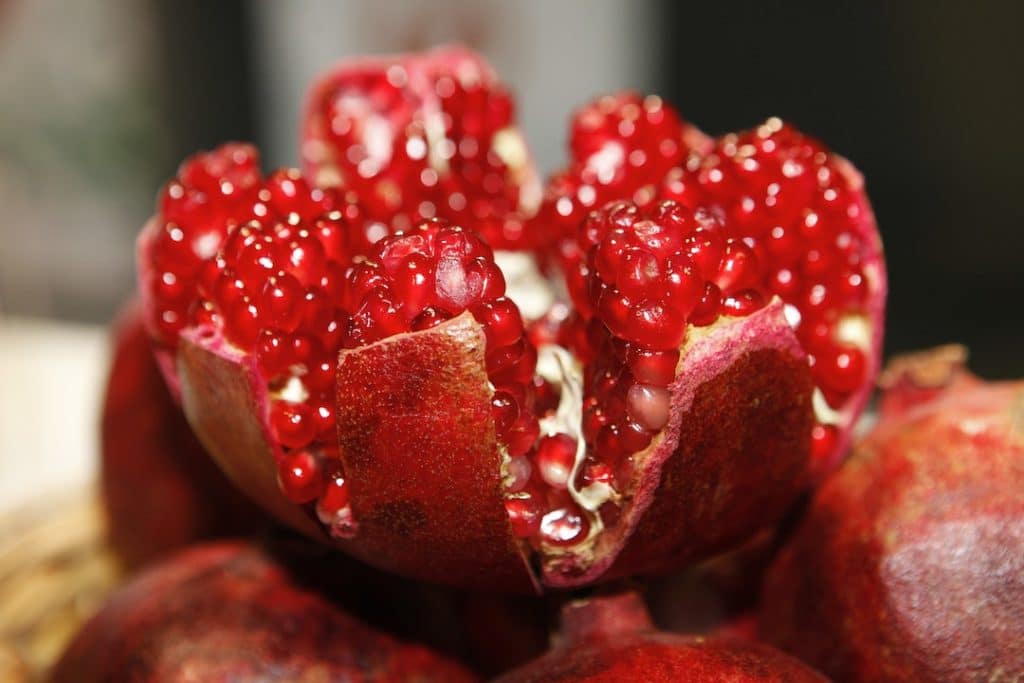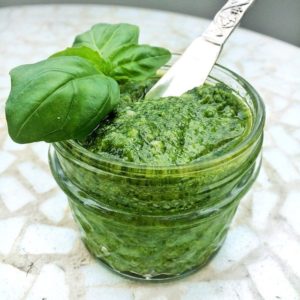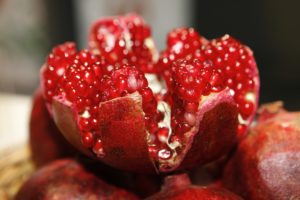This oh-so-pretty pomegranate and cranberry relish is a nutrient-rich treat.
Although the recipe is actually a sauce I felt it ended up more like a relish so that’s what I called it. That said, it’s completely interchangeable.
Pomegranate power
Have you worked with pomegranates before? Indeed, sprinkling a few of the seeds on top of a salad or a bowl of almost anything takes it up a notch or two from a visual point of view.
And the juice packs a pretty mean punch too with both the seeds and juice delivering a nice blast of antioxidant power. In fact, one study showed pomegranates may rate better than that red wine or green tea when it comes to antioxidant value. In addition, they’re phytoestrogenic so they are a good choice for women going through perimenopause and menopause.
Pomegranate seeds are naturally sweet and have quite a high sugar content. And I couldn’t find fresh cranberries so I used the dry variety making this quite a ‘sweet’ recipe that should be used sparingly.
While I used water in mine some people use apple or orange juice. For me, that’s too ‘candied’ and if you’re watching your weight it’s best to stick to the water.
If you still eat refined sugar (and I hope you’re phasing it out – here’s why: 1, 2, 3) you may feel the need for extra sweetener so I’ve suggested a drop of brown rice syrup. While it’s more natural and meno-friendly it can still spike blood sugar (encouraging fat storage) so only use a tiny bit.
I also included a sprinkle of spices to give it that little bit of an edge but that’s entirely up to you.
So without further ado let’s go.
Pomegranate & Cranberry Relish
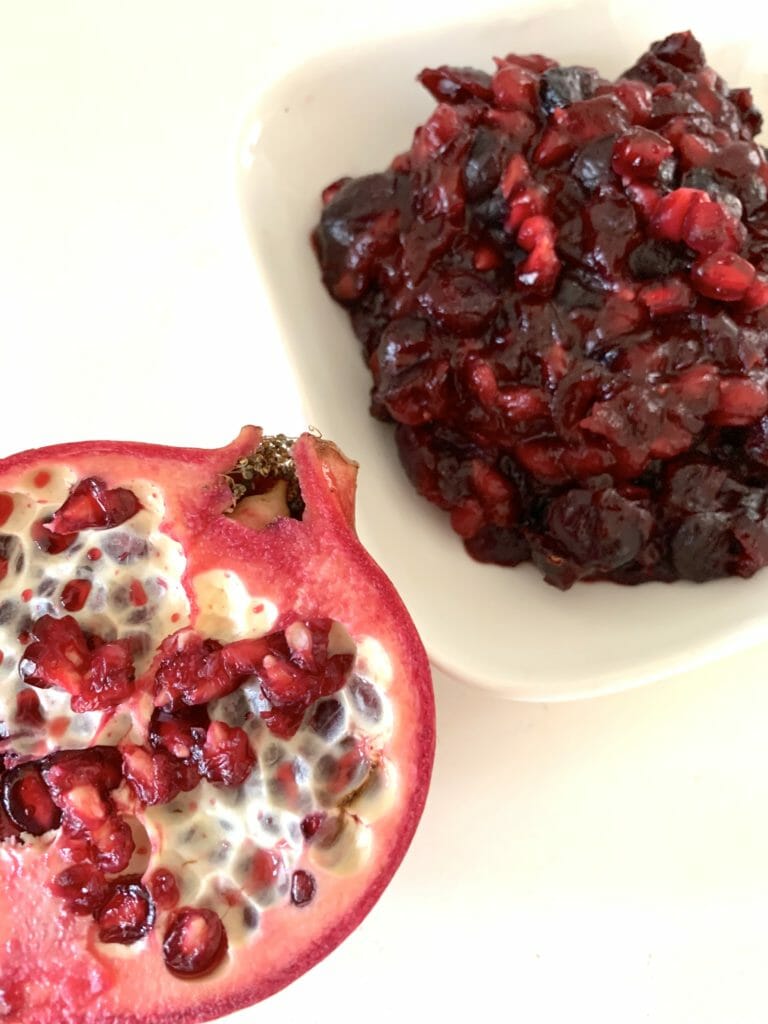
Ingredients:
- 1 cup cranberries
- 1 cup pomegranate seeds
- 1 cup water
Optional:
- Brown rice syrup to taste
- Nutmeg
- Cinnamon
- Ground ginger
Method:
Prep time: about 5 minutes
- Add the cranberries, seeds and water to a saucepan and mix.
- Bring to the boil and then reduce to simmer.
- Simmer for about 8-10 minutes.
- Do a taste test.
- Add sweetener and/or herbs if using.
- Stand aside to cool to room temperature.
- Serve.
What are pomegranates?
The pomegranate (punica granatum) is the fruit of a shrub that produces a red fruit not dissimilar to an apple in looks and size.
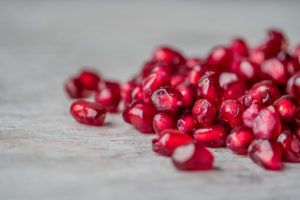
And pomegranate skin is thick and not ideal for eating. The magic lies in the seeds within which you can enjoy eating raw or as a juice. What’s more they’re great over salads and also make a beautiful sauce/relish (as above).
Pomegranate seeds contain quite a lot of sugar – natural unsweetened sugar – so it pays to bear that in mind when adding them to your diet. But they’re also full of fibre, antioxidants and are anti-inflammatory making them okay to indulge in if you’re experiencing aches and pains.
And a healthy bonus? Pomegranates have also been found to inhibit breast cancer cells.
Main image with thanks to Pexels
Share with a friend
Sign up for for weekly wisdom drops & news 🙂
